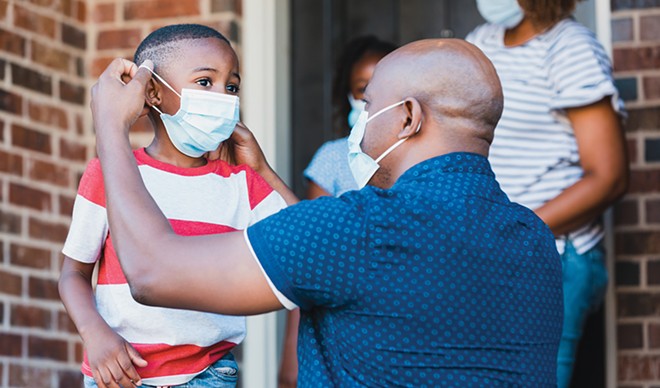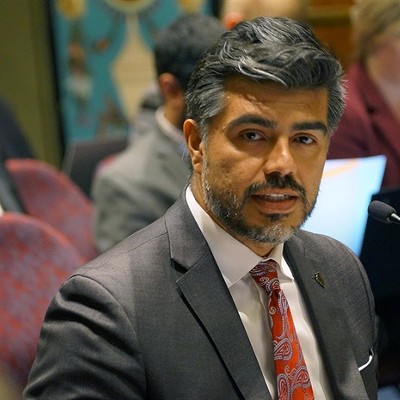Illinois ranks second in the nation for the cumulative number of children and youth diagnosed with COVID-19. Illinois youth, 19 years old and under, make up 15% of confirmed COVID-19 cases in Illinois as of Feb. 11. That's according to figures from the American Academy of Pediatrics and the Children's Hospital Association. Only 2.3% of children with COVID-19 end up hospitalized, but some deal with lasting health effects. And there are indirect impacts as well – academic progress and social and emotional enrichment are taking a hit.
Experts say indirect impacts of COVID-19 disproportionately affect Black and brown families as well as low-income households. Researchers are also concerned with the growing number of kids who contract the virus and deal with medical symptoms weeks later. Vaccine trials for youth are underway, but shots are not expected to reach most young people until 2022.
For most of 2020, "the proportion of mental health-related visits for children aged 5-11 and 12-17 years increased approximately 24% and 31%, respectively," according to the U.S. Centers for Disease Control and Prevention. During a Feb. 19 panel hosted by University of Illinois Springfield about the impacts of COVID-19 on youth, experts said the childhood poverty rate in Illinois was between 15% and 20% before the pandemic, but has likely gotten worse. For some children, schools provide stability – food and safe spaces to socialize with peers. The pandemic has made it harder for students to readily access resources commonly provided in school buildings, according to Sameer Vohra, founding chair of the Department of Population Science and Policy at SIU School of Medicine. He said being out of school places a "deep mental health burden" on children and their families.
Vohra also said an increasing number of children are experiencing multi-system inflammatory syndrome (MIS-C) after having COVID-19. Several weeks after contracting the virus, some children experience fevers, rashes and full-body inflammation. This is "very rare," but Vohra said there have been cases of MIS-C in Springfield. Nationally, the CDC shows 35% of youth diagnosed with MIS identified as Hispanic or Latino and 32% identified as Black or African American. In myriad ways, the pandemic has magnified gaps in access to quality health care, education and support services.
Astrid Suarez is director of education at Enlace Chicago in Little Village. The organization offers youth and adult outreach and education services, as well as legal aid. Suarez told the Illinois State Board of Education at a December hearing, "Our students have been losing their families, their families are losing their jobs, their houses." Suarez said existing inequities are exacerbated by the pandemic and communities need additional funding to support low-income families and youth. Without this, "the social, emotional and mental health impacts" of COVID-19 "will last for many more years, and it will deepen the inequities in our community," said Suarez. Congressional research and data from the U.S. Bureau of Labor Statistics shows unemployment rates for white people at the end of 2020 dropped to 6% compared to an unemployment rate of 9.9% for Black and African American people and 9.2% for Hispanic and Latino people.
Equity does not mean giving everyone the same thing, according to Superintendent of Springfield Public Schools Jennifer Gill. "It's giving each individual student the things that they need and then also removing the barriers that are in front of them," Gill said during the UIS virtual panel. Gill said the district plans to use federal funds from the CARES Act to increase summer learning opportunities for students with learning loss. Gill said three times the number of students received failing grades at the end of the school year's first semester compared to the previous one. There are students at home competing for WiFi and electrical outlets or struggling with broadband connections. Gill said others find it hard to participate online.
Experts say the impacts of COVID-19 should not be reduced to infection rates and adult deaths. Inequities do not stop at access to health care. Historically marginalized communities are financially struggling and their children are academically and emotionally overburdened by the pandemic.
Contact Madison Angell at [email protected].
















